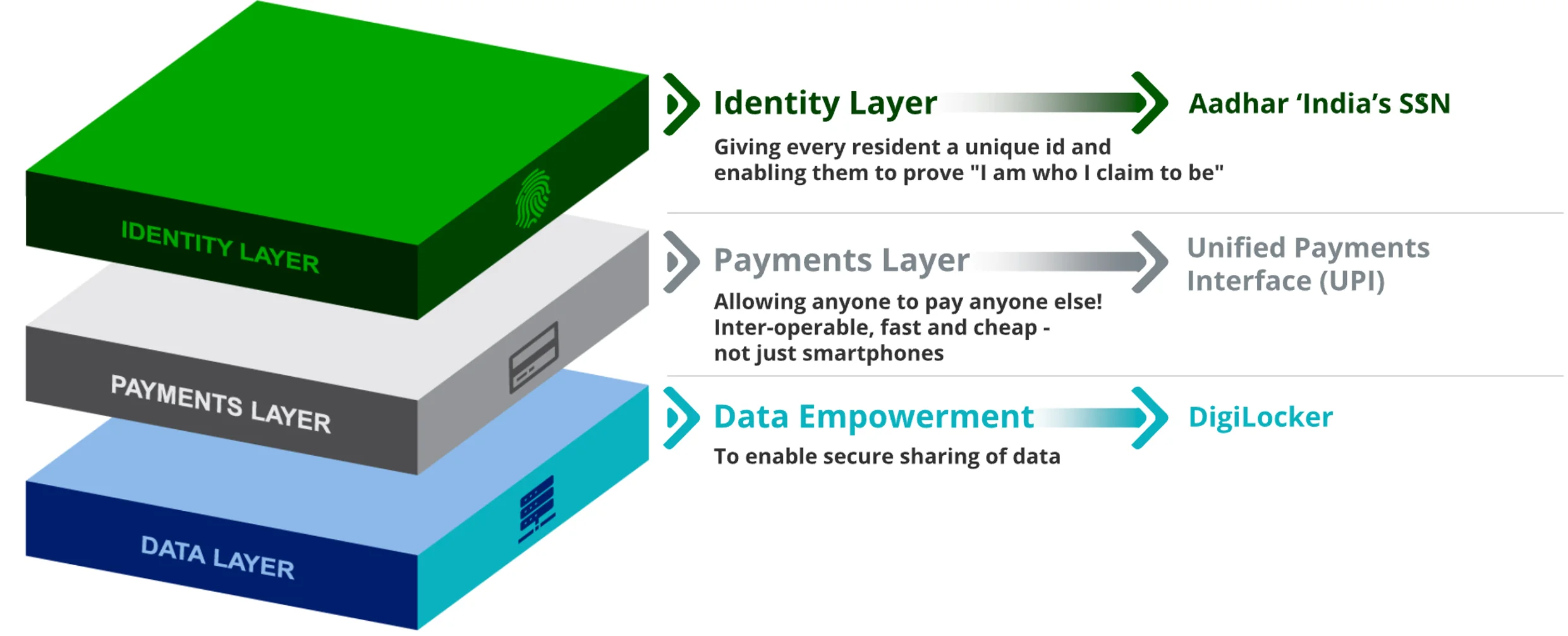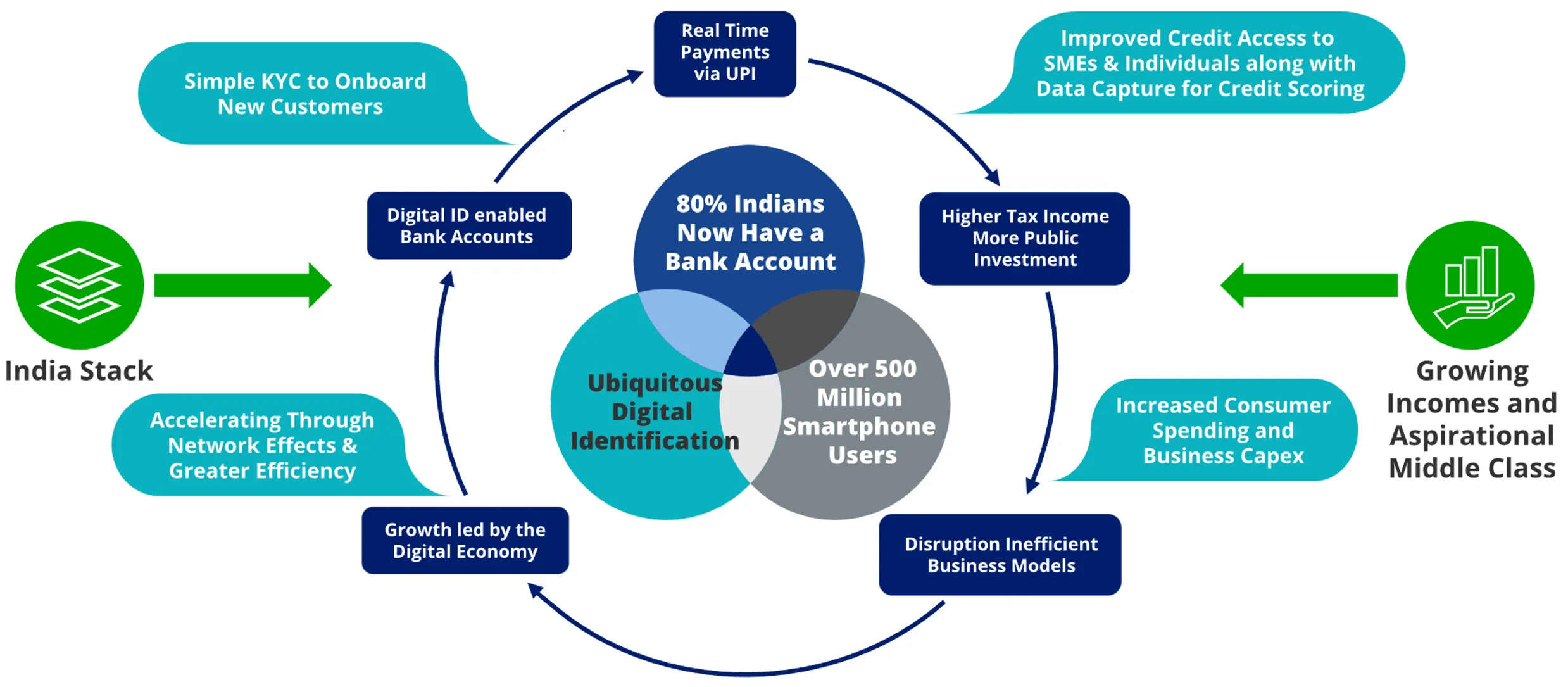It's not just cricket
As investors are looking to diversify beyond developed markets, among emerging markets, India’s economic trajectory is capturing attention. It has been a story many years in the making, built on a foundation of macroeconomic transformation and long-term structural reform.
Unlike commodity-driven economies or export-dependent nations, India’s growth has been powered by domestic demand. With over 1.4 billion people, more than half under the age of 30, India’s population represents a flourishing consumer base, an expanding labour force, and a digital-savvy population. We think these dynamics warrant investor attention.
India's blend of entrepreneurial dynamism and state-led structural reforms including infrastructure investment has provided momentum for sustainable economic growth. For investors, India is no longer an “emerging” story—it’s an emerging leader.
A structural shift in the making
When Prime Minister Modi was elected to power in 2014, he undertook policy reforms and focused on structural priorities, and the implementation of these supports India’s economic rise. The government’s commitment to long-term reform is beginning to pay dividends, with initiatives like “Digital India,” and “Make in India.”
These have led to, what is referred to as, “India stack”. India stack is the cornerstone of India’s digital transformation. It facilitates banking services and digital payments and the benefits flow through to the entire economy, increasing efficiency, lowering transaction costs, and creating new markets for businesses and investors.
At its core, India Stack consists of:
Identity layer: India’s social security number Aadhaar, a simple digital ID has (a) simplified KYC processes and lowered onboarding costs for financial institutions, (b) allowed direct benefit transfers from the government, and (c) enabled digital payment services to new bank account holders.
Payments layer: Unified Payments Interface (UPI) is India’s instant payment system that offers transaction-free seamless money transfers using the digital ID layer provided by Aadhaar.
Data layer: A digital database called “DigiLocker” (online data repository of e-documents) stores important data from Aadhaar, driver licenses, health records, and more.
Together, these systems enable online, paperless, cashless, and privacy-respecting digital access to a variety of public and private services. These elements collectively form a robust foundation for various sectors to build innovative solutions.
Foundations of India Stack

The impact of India Stack has flown through to financial services. And this, in turn, is helping the broader economy via income and credit growth. There are more avenues for income generation, especially for people who had not had access to, or indeed, a bank account in the past. Individuals and businesses can access credit more easily, fuelling investment, entrepreneurship, and economic growth.
Since the invention of money, increasing incomes and access to credit has fuelled economic prosperity, from the Romans to the guilds of Florence, the symbiotic relationship between income growth and credit expansion has the potential to drive a virtuous cycle of economic development. We are witnessing this unfold in India.
India Stack’s network effect: scaling up growth

Source: VanEck, December 2024
It is not only digital infrastructure that has been driving economic efficiencies. On the physical side, capital investment in roads, railways, and renewable energy is helping facilitate growth in India's economy. These include the national highways expansion and rail projects.
National highways expansion
- The Indian government has undertaken extensive projects to expand the national highway network.
- New highways and expressways are being constructed to reduce travel time and improve connectivity between major cities and economic hubs.
Railroads - high-speed rail projects and dedicated freight corridors
- India is investing in high-speed rail projects, including the ambitious Mumbai-Ahmedabad High-Speed Rail Corridor, which will connect Mumbai (the financial hub of India) with Ahmedabad, the largest city in the state of Gujarat.
- These projects are expected to revolutionize travel by significantly reducing travel time between major cities.
- The development of dedicated freight corridors is also a primary focus to drive the efficiency of freight transportation.
In terms of manufacturing, the Production Linked Incentive (PLI) scheme, launched in 2020, covers 14 industries, with electronics and a parallel semiconductor investment plan accounting for half of the US$40 billion in subsidies over five years.
So far, the scheme has been successful. According to the International Monetary Fund (IMF) India manufacturing value added as a percentage of GDP was 13% in 2022.
The scheme creates the potential for global manufacturers to view India as a viable alternative to China for supply chain diversification. Recently Apple’s Tim Cook said, “The majority of the iPhones bound for the US market in the coming months will be made in India.”
At the same time, pro-business regulatory changes have helped ease the path for foreign direct investment and improved India's global ease of doing business rankings.
Together, these changes reflect more than cyclical strength, they indicate a nation that is more globally competitive, productive and innovative. It represents, for investors, a potential opportunity.
Quality growth amid valuation concerns
While India's equity market has shown impressive performance over the past two decades, some investors express caution over high valuations. This is where being selective is important. We think a Growth at a Reasonable Price (GARP) approach, which targets companies that exhibit strong growth metrics yet are reasonably priced, can help investors navigate the market's potential without overexposure to inflated valuations.
GRIN: A Gateway to India's Growth Leaders
The VanEck India Growth Leaders ETF (GRIN) utilises a GARP strategy, and it offers exposure to fundamentally sound Indian companies. GRIN aims to capture the essence of India's economic momentum while maintaining a disciplined investment approach.
Key risks
An investment in the ETF carries risks associated with: ASX trading time differences, India, financial markets generally, individual company management, industry sectors, foreign currency, sector concentration, political, regulatory and tax risks, market access, fund operations, liquidity and tracking an index. See the PDS and TMD for more details on risk.
Published: 11 May 2025
Any views expressed are opinions of the author at the time of writing and is not a recommendation to act.
VanEck Investments Limited (ACN 146 596 116 AFSL 416755) (VanEck) is the issuer and responsible entity of all VanEck exchange traded funds (Funds) trading on the ASX. This information is general in nature and not personal advice, it does not take into account any person’s financial objectives, situation or needs. The product disclosure statement (PDS) and the target market determination (TMD) for all Funds are available at vaneck.com.au. You should consider whether or not an investment in any Fund is appropriate for you. Investments in a Fund involve risks associated with financial markets. These risks vary depending on a Fund’s investment objective. Refer to the applicable PDS and TMD for more details on risks. Investment returns and capital are not guaranteed.




